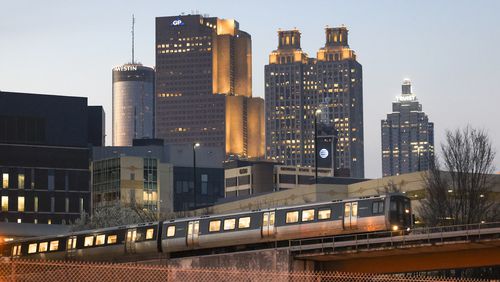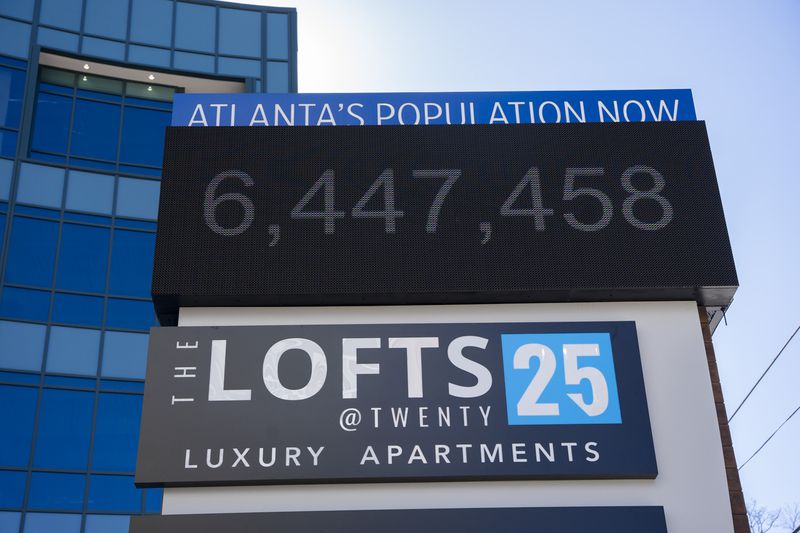We full? Not even close.
The 21-county metro Atlanta area will grow to 7.9 million people by 2050, the Atlanta Regional Commission said in new population estimates that show the region growing older and more diverse, with explosive growth among Hispanics and Latinos.
The future ARC analysts predict is the continuation of many trends that have led the city of Atlanta and its surrounding counties to grow into the capital of the Southeast.
While a lot can change before 2050 and no one’s crystal ball is perfect, the impact of housing and infrastructure policy can take decades to bear fruit. These long-term projections are critical data that will guide government leaders on how to prepare for this potential influx of new residents.
“Metro Atlanta’s continued prosperity is not a given,” said Anna Roach, executive director and CEO of the ARC, which is a regional planning agency. “We must keep investing in our infrastructure and in our people to build a successful future. Our peer regions aren’t sitting still, and neither can we.”
The projected growth hinges on Georgia’s booming economy. The ARC forecasts that metro Atlanta will add 856,000 jobs by 2050, creating career opportunities that keep young Georgians near home and attract workers to migrate from across the country and world.
Fulton County is forecast to remain the state’s most populous with more than 1.3 million residents. But a second — Gwinnett — will soon join the seven-figure club and is expected to have 1.2 million by 2050. The fastest-growing counties are all on the edges of the metro, led by Forsyth, which is expected to increase its population by 79%.
The ARC releases these projections roughly every four years to inform its transportation and infrastructure investment recommendations under what’s called the Metropolitan Transportation Plan. The ARC board approved the latest iteration of that plan Wednesday, estimating that $168 billion of infrastructure projects are needed across metro Atlanta to facilitate the expected growth.
Credit: Olivia Bowdoin
Credit: Olivia Bowdoin
Mike Carnathan, the ARC’s managing director of research and analytics, said these are trends that can’t be ignored. Atlanta’s existing challenges — a shortage of housing, infamously clogged roads and a tight employment market — won’t stop the coming growth, and leaving those issues unchecked will only exacerbate those problems as the region’s population swells by 1.8 million people.
“The simple fact of the matter is that we’re not full,” he said. “There’s still plenty of ways that we can grow.”
Older and more diverse
The ARC’s last forecast for 2050 was in early 2020, before the worst of the pandemic. The ARC has since lowered its population projections for metro Atlanta by roughly 700,000, reflecting a pandemic-induced dip in migration and further decelerating birth rates.
“Regardless of your race or ethnicity, fertility rates are below replacement levels,” he said.
Decades ago, white Georgians became the first to see fertility rates dip below replacement, meaning average birth rates dropped below two children. The ARC noted that Hispanics in metro Atlanta were the last to see their birth rates drop, which is why they are expected to bolster much of the region’s forthcoming population boom.
Hispanic and Latino residents are forecast to account for 21% of metro Atlanta’s population in 2050 compared to only 12% today, with growth across the region.
Metro Atlanta’s population isn’t expected to just become more diverse — it’ll also get older.
By 2050, nearly 12% of the population — more than 900,000 people — will be at least 75 years old. Today, that figure is only 5%.
Carnathan said an older population presents a new series of societal challenges, including needs for different housing, mobility and more health care.
A suburban swell
The ARC forecasts growth across all 21 metro counties will be uneven.
The core five Atlanta counties — Clayton, Cobb, DeKalb, Fulton and Gwinnett — are projected to account for nearly half of the region’s growth in raw numbers.
Gwinnett, already on the cusp of 1 million residents, is looking at denser development and pumping billions into transit. One potential node is a redevelopment of the struggling Gwinnett Place Mall. Rural areas of the county are likely to see less change.
“Without an awareness of that anticipated population growth, it’s a lot harder to make decisions in terms of where that (growth) is going to go and where it will concentrate,” said Chris Hayward, Gwinnett’s assistant director of planning and development.
Forsyth, north of Atlanta, has seen this impending wave for years. Russell Brown, the county’s director of communications, said the challenge lies in making the infrastructure improvements needed to accommodate those new residents without ostracizing current homeowners who planted their flag in Forsyth because of its suburban vibe.
“The county doesn’t want to just jump headfirst into becoming Atlanta,” he said.
Barrow, Paulding, Cherokee, Walton and Coweta counties are also forecast for huge growth.
The ARC’s projections did not include cities, but Carnathan said 190,000 new residents are expected to live within Atlanta’s city limits by 2050. It’s a drastic increase for Atlanta, which saw it’s population decline amid white flight and remain stagnant until recent years.
Kevin Green, president and CEO of Midtown Alliance, said developers are responding to demand with new housing in the densest, most walkable part of the city. Since 2018, the number of new housing units to open in Midtown has increased by 58%.
“We are not full at all,” Green said, “but we need to be building a lot more housing than we’re doing now as a region and as a city.”
About the Author








